NOTE: Last December, after months of research, The Zephyr posted a 25,000 word story about one of the most tragic and bewildering crimes ever to be committed in Southeast Utah. The murder of Jeannette Sullivan, the near fatal shooting of Charles Boothroyd, and the alleged kidnapping, and assumed murder, of daughter Dennise Sullivan on July 4, 1961 still leave questions, sixty years later. It is a tragic mystery — Dennise’s body was never found.
The long article deals in great detail with that crime, but also with the family histories of those people who were part of the tragedy, including the shooter, Abel Aragon. This story is a follow up to the original article; it asks questions about the fate of Dennise Sullivan and speculates on different possibilities. But to understand this story, you need to first take the time to read the original. Here is the link to: “July 4, 1961: Murder & the Enduring Mystery at Dead Horse Point.“
This follow up tries to consider all the theories about Dennise’s ultimate fate, and proposes a new one—a fate just as tragic but perhaps not as torturous as the ones so many assume to be true. I leave it to the reader to make up his/her own mind…JS
There is no ‘good’ ending to this story…The last moment that anyone knows with absolute certainty where Dennise Sullivan was on the night of July 4, 1961 came barely a minute or two after Abel Aragon fatally shot her mother, Jeannette, and critically wounded Charles Boothroyd. Dennise had tried to escape the scene in the Volkswagen Beetle, had managed to travel barely seven-tenths of a mile, when Aragon, after repeatedly ramming the small car, forced her from the road. The VW came to rest near a culvert, just west of the Seven Mile Canyon switchbacks. She was never seen again.
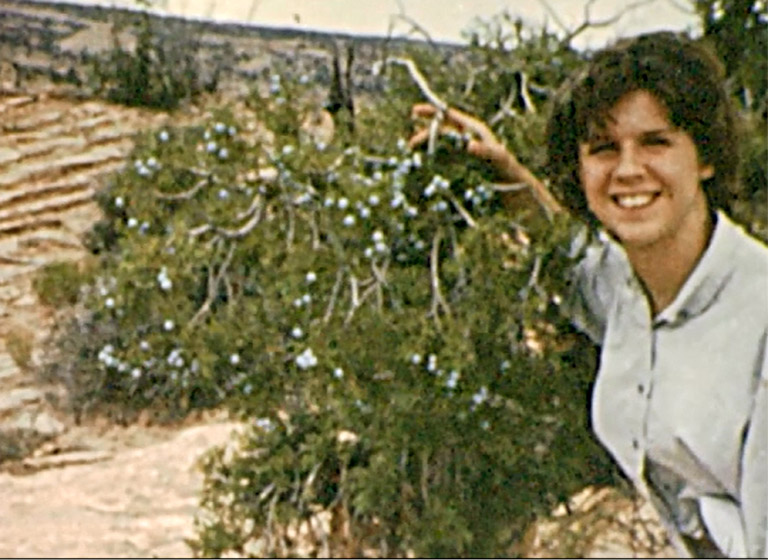
Coming up the switchbacks at that precise moment was an oil field worker named Leonard Brown. He was headed west, back to his rig and was almost an eyewitness to the shootings. Minutes later he found a bloody Charles Boothroyd lying in the middle of the road. But first, before he realized that anything wrong had happened, an eastbound Ford sedan raced past him. According to Brown, he saw the Ford and thought nothing of it, but barely 200 yards later— 15 seconds — he came across the VW. It was that close.
Almost a mile farther west, Brown found Boothroyd, and then the fatally wounded Jeannette; he put them in his car and headed for Moab. It wasn’t until Boothroyd, still conscious, saw the Volkswagen and asked Brown to stop, that Leonard realized there had been another car and that someone else was involved. To Brown’s horror, Charles explained that it was Jeannette’s 15 year old daughter, Dennise. Brown looked inside the car but nobody was there. Dennise was gone.
Brown had a radio telephone in his car and had been able to alert the Moab sheriff via the Brinkerhoff Oil Company office in Farmington. Immediately a deputy was dispatched to the scene. When Brown saw the flashing lights, probably somewhere near the Dead Horse junction with US 160 (now US 191), Brown pulled over and talked to the deputy; Leonard explained that he had two gunshot victims in his car who needed immediate attention. Leonard quickly told the deputy about the other car and the missing daughter. He told the deputy that “he must have taken her,” and that the car was headed east, toward the highway junction. By now, the suspect’s car could be on the main road headed north. From this moment, it was assumed that Dennise Sullivan had been kidnapped.
The deputy, realizing that the victims’ condition was critical, turned around and escorted Brown and his passengers at high speed to I.W. Allen Hospital. Meanwhile Sheriff John Stocks dispatched more officers to the crime scene. They found the VW, still by the road and made a cursory check of the area, but it was now almost midnight. Even more difficult was attempting to find the location of the shooting itself, which Brown had explained was almost a mile west of the VW. Most likely, the site of the shooting wasn’t fully examined until the next morning, when law enforcement officers, led by Brown, were able to pinpoint the site of the murder.
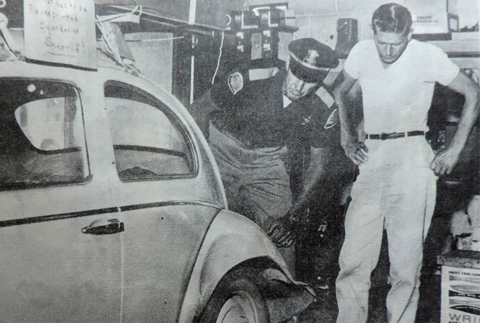
Stocks had already established roadblocks on all the major highways leading out of the area by 10 PM on Tuesday night. But by the following morning, there had been no sign of the suspect or the girl, or his vehicle. Stocks called in every resource he could think of to help locate Dennise. Over a hundred local men from the Moab Jeep Posse donated their time in the effort. Aircraft from the Utah Highway Patrol and the US Army and Air Force participated in an air search. Private pilots contributed their time as well. Boats were employed to search the river. It was probably the largest and most well-coordinated search in the county’s history, but relative to the search area, their efforts seemed futile. As Stocks later described it, they were searching a corridor 70 miles wide and a hundred miles long that cut a swath across some of Grand County’s most rugged country and into the even more remote corners of western Colorado. There was so much space and so little time. Stocks knew time was of the essence. If Dennise was still alive, he feared her safety with this murderer could not last much longer. And if he abandoned her somewhere in this desolate land, in one hundred degree temperatures and with no water, she wouldn’t last a day.
On Friday night came the unexpected confrontation with Aragon at Crescent Junction. His death by suicide brought the realization that the key to Dennise’s location just died with the man that murdered her mother. The very next day, law enforcement learned of Aragon’s time on Polar Mesa, when a miner talked to Aragon in the early hours of Wednesday morning. The search now concentrated on the mesa. Aragon had been seen, and some had even spoken with him. He had been spotted during the day, but each evening, on Wednesday and Thursday, he left the area, to where no one knew.
Searchers located clothing, believed to be Aragon’s, stuffed under some rocks. Then a rifle was discovered; later it was proven conclusively to be the murder weapon. Finally, wildlife officer Dan Winbourne found two sets of tracks, one large and one small, and Winbourne said it appeared that the person in the larger shoes was dragging the smaller person along. For many, this became a defining moment in pondering the fate of Dennise Sullivan. Surely Aragon had kidnapped the girl, brought her up to the mesa and eventually killed her. Searchers spoke of the hundreds of mine shafts and crevices atop Polar Mesa where a man evil enough to murder a 15 year old girl would dispose of her body. But the tracks were never photographed or cast and before anyone thought to confirm their identity, severe winds scoured them clean from the sandy mesa .
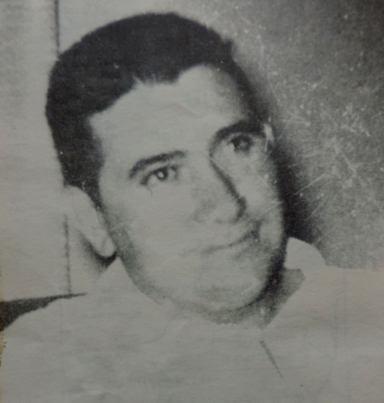
Not everyone was convinced. To his death, John Stocks believed that Dennise had been murdered soon after the initial shootings, and that the Colorado River became her burial ground. Stocks had found a confusing array of tracks by the river, 14 miles upstream from Moab, in which it looked like someone had dragged an object to the river’s edge. In the years to pass, boaters would keep an eye out for anything that might resemble mortal remains; likewise hunters were sure that sooner or later, Dennise would be found in the forested tablelands and plateaus near Polar Mesa. Years passed. Then decades. Somewhere along the way, the story was lost.
THE LOST & DESTROYED RECORDS
Whatever speculation has occurred since then about the fate of Dennise Sullivan, it has been fueled by the utter lack of information that is available to the public, or even to the law enforcement agencies themselves. The incident is still shrouded in confusion and misrepresentation, in part at least, because every agency that was involved in the investigation, from the Grand County Sheriff to the FBI, inexplicably destroyed all their records. I first tried to gain access to the original Grand County Sheriff’s in 2016 and was told that the records could not be found.
Subsequent to posting the original Zephyr article in June 2021, I filed an Open Records request with the Grand County Sheriff Office, and separately, a Freedom of Information request with the FBI. Grand County notified me that “the records requested are not maintained by our agency.” The County’s reply suggested the possibility that some of those documents may have been turned over to another agency, i.e. the FBI.
Weeks later, I received a letter from the FBI, which informed me that many of the materials I sought had “been destroyed.” However, the agency also suggested that some of those materials may have been turned over to the National Archives. The FBI assigned me a case number and advised me to file a FOIA with them. I took action the same day.
The National Archives replied, and assigned me a new file case number, but warned that because of Covid-19, it might take longer than expected to process the request. When I wrote back to ask for a time frame, the agency advised that they could not, and that they could only respond to further relevant questions every six months.
How any of these agencies could have disposed of all the evidence and information related to a double murder/kidnapping is almost incomprhensible, especially in an open, albeit cold case, in which one of the assumed victims has never been found. Granted, the case is 60 years old, but Dennise is still listed in the database of the National Center for Missing and Exploited Children (NCMEC #1162825). The National Missing and Unidentified Persons System (NamUs), “a national information clearinghouse and resource center for missing, unidentified, and unclaimed person cases across the United States,” also maintains an active file (#MP8784).

And yet, none of the relevant law enforcement agencies have, so far, been able to provide a scintilla of information. Barring a miracle from the National Archives, the crime scene photographs are gone, and statements of witnesses are gone. The official reports by the Sheriff and the FBI no longer exist. There are so many questions that have lingered for decades, left unanswered or ignored. Even the most basic examination of the evidence collected at the time could shed light on the mysteries that still enshroud the crime today. Among the questions about the fate of Dennise Sullivan that still linger:
* When Aragon forced Dennise off the road, where were the tire tracks of his sedan, relative to the Volkswagen? In other words, when she came to a complete stop, was he able to stop simultaneously, or did his car move farther down the road?
* If Aragon stopped quickly enough to pin his sedan against the driver side door of the VW, was the passenger door open when law enforcement located that vehicle? Were Aragon’s fingerprints on the passenger side of the VW?
* Was there any sign of a struggle by the side of the Volkswagen? If so, which side of the car?
* Were there footprints or evidence that Aragon forced her into his vehicle?
* Was there physical evidence left by Dennise in Aragon’s vehicle? Was the vehicle processed for blood or hair samples? Were her fingerprints found in Aragon’s car? Was there any evidence of a struggle in his Ford sedan? Were there cuts or bruises on Aragon’s body, if Dennise had tried to defend herself against him as he attacked her?
* How many photographs of the crime scene were shot on the day after the murders? Were there multiple images taken of the interior of Aragon’s vehicle that showed the passenger side of the Ford?
* Were photographs taken of the tire tracks, of both the VW where it came to a stop, and Aragon’s Ford?
* Did anyone ever positively identify the Polar Mesa shoe prints as being those of Dennise? We know that a positive ID was made on Aragon’s shoes and that plaster casts were processed. But how sure was law enforcement that the smaller footprints were related to Dennise or to the crime?
* When Aragon’s rifle was found, how many live rounds were left in it? It was determined that he ejected one live round and then fired three more times at Sullivan and Boothroyd. How many rounds were left in the magazine and what was its capacity?
* When Aragon shot himself on the night of July 7, he fired once. Was the .22 pistol fully loaded when he shot himself or were there other rounds already missing or fired from the gun? (It’s not even known if the .22 pistol was a revolver or a semi-automatic with a clip.)
* The sheriff mentioned that after Aragon died, the FBI processed the vehicle for evidence. Sheriff Stocks noted that the undercarriage of Aragon’s Ford was full of brush and broken branches, and the sides of the Ford were badly scratched, as if he had driven the car through tall brush. Did they examine the vegetation that was stuck in the undercarriage to determine just what type of grass or brush he had been driving through? The vegetation at 8000 feet on Polar Mesa varies considerably with what is found at lower elevations. Such information might have helped shed some light on Aragon’s movements after the shootings.
* Was there an inventory made of the possessions found in Aragon’s car? Was anyone from the Aragon family asked to look at that inventory and determine if anything was missing? Did Aragon have enough supplies to stay in the wilderness for very long? Did he have an extra gas can, for example?
* Assuming he filled his tank on the morning of July 4, 1961, what would have been the range of his vehicle? How many miles could he have traveled before he needed to fill up again?
* How many photographs of the crime scene were shot on the day after the murders? How detailed was the processing of Aragon’s car? Was it specific enough to locate hairs and fibers? If so, was this information included in the reports that are now missing?
* It’s almost certain that Aragon placed a long distance call to his wife Eva in Price at approximately 9 PM on Thursday, July 6. He called her from a phone booth in downtown Moab. Were officers from Carbon County sheriff’s office with Mrs Aragon when Abel made the call? Is there a record of what he told her? (It might also be noted that July 6 was Abel Aragon’s birthday.)
These are some of the questions that need to be answered and might have been, had the records been available. Barring some eventual response from the National Archives, it would appear the results of law enforcement’s 1961 investigations are gone forever.
(NOTE: At the time this article was posted, The Zephyr sent another request to the National Archives via the Freedom of Information Act, regarding any documents or evidence related to the July 4, 1961 crime. In August we had been notified that there was at least a six month wait, due to COVID-19 issues. Six months have now passed so I resubmitted the FOIA request. I received an auto-generated reply, similar to the last response…JS)
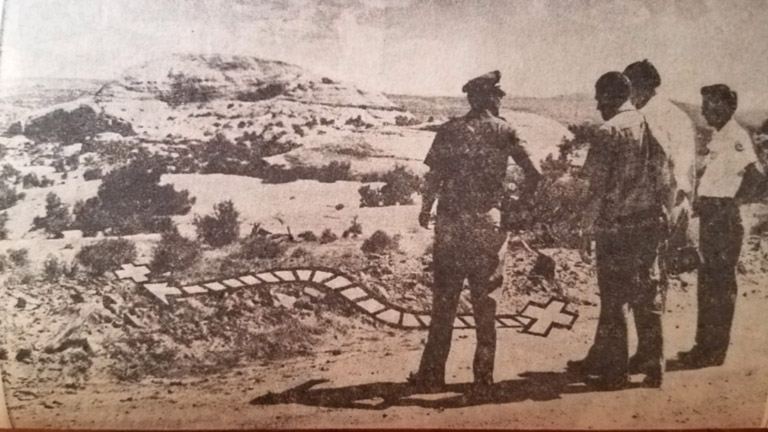
RE-EXAMINING WHAT WE KNOW…
Several years ago, when I first started researching the story, I was able to gain a lot of information via newspaper.com and ancestry.com. The sites gave me access to hundreds of newspaper articles that ran in Utah and across the country in the days and weeks after the shooting. With some additional information I was able to create a narrative of events that came as close to the truth as I felt could be achieved.
Still, I knew the story was thin. A couple weeks after The Zephyr story posted in June 2021, I learned that a small booklet called “Whatever Happened to Denise (sic) Sullivan: A Bazar (sic) Murder and Kidnapping” was written by Utah historian Steve Lacy. I had never heard of Lacy or the book, but it had been published in 1979 and had been out of print for years. I was unable to obtain a copy until weeks later, when both of Charles Boothroyd’s granddaughters, Linda Boothroyd Lazaroff and Carolyn Boothroyd contacted me. They had somehow found my online article, saw my plea for more information and reached out. Both were extremely generous in helping me expand my knowledge of the incident, and of their family. I realized that to do the truth justice, I would need to rewrite the article and broaden the narrative.
They entrusted to me a thick binder full of newspaper clippings and other personal items from the time; many of the articles were new to me and not accessible via newspaper.com. They also sent me a copy of Lacy’s book to read and a copy of the winter 1991/92 Peace Officers Association magazine. In that edition, Lacy’s story had been revised and updated by Jarrod W. Pickett (efforts to contact Mr. Pickett have so far been unsuccessful). It had been retitled, “Footprints in the Sand: Whatever Happened to Denise (sic) Sullivan.”
While I disagreed with some of Lacy’s scenarios and theories about the murders, his effort was, until now, the first and only attempt to research the chronology of the incident. His attempts to reach young Jeanne and the Boothroyd granddaughters was a gesture that both families deeply appreciated. The updated 1991 article, with Pickett’s additional research, provided new information that will be discussed later.
Having been able to connect with Linda and Carolyn, I still wondered about the young daughter, Jeanne, who had found herself without a mother or sister at such a young age, and under such unspeakable circumstances. As it turned out, both Linda and Carolyn had stayed in touch with her over the last half century and more, and they contacted Jeanne on my behalf. Last summer, Jeannette Sullivan’s surviving daughter, now Jeanne Nabozny, sent me an email as well. Since then, she has shared her own history of the last six decades. It’s a story that is shaded by years of shared grief and sadness that Jeanne and her grandmother endured, but made brighter by the hope and generosity that defined both of them.
Six weeks after The Zephyr story was posted, ABC4-TV in Salt Lake City ran a four part series on the crime that featured Lacy. It also introduced clips from an 8 mm film that Boothroyd shot of the trip in 1961. Charles Boothroyd gave the film to Jeanne decades ago and just this summer, Lacy was able to transfer it to a DVD.
Jeanne, as well as Linda and Carolyn gave us permission to digitize their grandfather’s film; still images from it appear here and in the body of the main story. It is painful to watch, to see how ecstatic Dennise and Jeannette were on their first trip to the American West. As we watch, we know what’s coming, but they, unaware of the horrific events that awaited them just a few hours in the future, show unbridled joy. But it is also a remarkable, if tragic contribution to history.
THE THEORIES
The red tennis shoes & the Colorado River
When KTVX and reporter Marcos Ortiz aired its four part series, its final segment offered a possible solution, albeit tragic, to Dennise Sullivan’s fate. Historian Steve Lacy who authored the 1979 book about the murders recalled what he believed was a tantalizing clue. During the search Lacy explained that , “…they eventually find Dennise’s tennis shoes, side-by-side, next to the Colorado River. And it’s like he was letting someone know where she was.”
The KTVX series implied that the case had been solved. But do the facts support Lacy’s implication? I had never heard of this discovery, and I asked Linda Boothroyd Lazaroff if she was aware of the story. Not only had she heard it, she had the original Salt Lake Tribune newspaper clipping. Far from substantiating the claim, it raised serious doubts. The article explained that:
“….on Friday, a pair of women’s sneaker shoes placed neatly side-by-side on the east bank of the Colorado River drew the interest of law officers…The shoes, black sneaker oxfords were found by O.L. Anderson (a) Moab boater who brought them to Moab and turned them over to County Sheriff John Stocks.
“The concern of the FBI expressed earlier on Friday was that the shoes were black. It was thought that the 15 year old Denise (sic) wore red sneakers.”
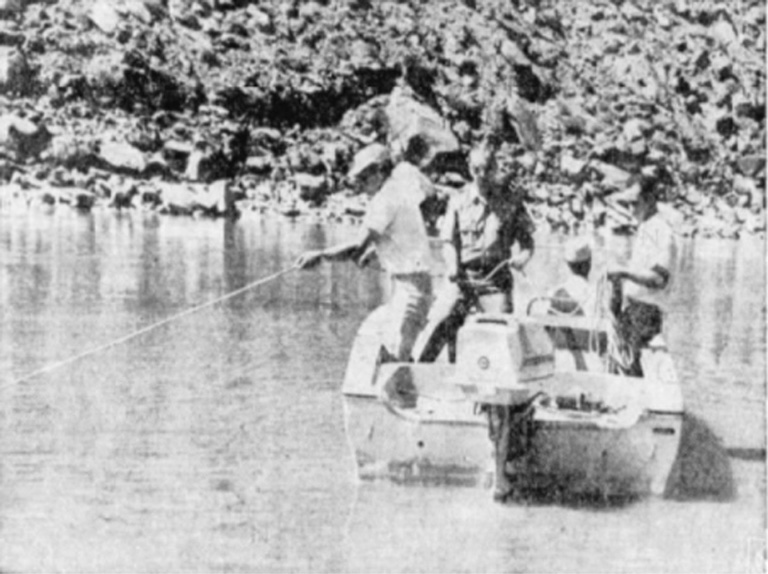
Further, Lacy himself eventually rejected the possibility that the shoes were connected to Dennise in his 1979 book. Though Lacy’s book, written almost 20 years after the crime, claims that the shoes were indeed red, he added that, “The tennis shoes were rushed to Salt Lake City to see if Boothroyd could identify them. He was unable, however, to say if they belonged to Dennise.”
If the Salt Lake Tribune story is accurate, and remember it was written the day after the shoes were discovered, then the shoes were surely the dead end lead that the FBI believed they were. An examination of Boothroyd’s 8 mm color film confirms beyond a doubt that Dennise wore red tennis shoes on that day.
Finally, a year later, when reporters asked Sheriff Stocks what he thought was her fate, he still believed the tracks he had found 14 miles upstream might have been hers. But he never suggested that he found footprints that would have positively identified them as Dennise’s. Further, he never mentioned the pair of sneakers. Obviously, even Sheriff Stocks dismissed the sneaker story.
Polar Mesa “tiny” footprints
In addition to this year’s Zephyr articles about the 1961 Dead Horse murders, and the KTVX series, the Moab weekly Times-Independent recently updated the story in 2018 when it reported new interest in finding Dennise. In part the story reported:
“According to (Sheriff) White, the National Center for Missing and Exploited Children is sending an investigator and a set of cadaver dogs to Polar Mesa this week to continue the search for facts and clues related to the disappearance of Denise.
“‘We were contacted by the investigators about four months ago asking if we could help look into this case from 1961,” White said. ‘They said they feel, given some information they have come across, that they wanted to go back out there and look at the old mine shafts and some of the area encompassing Polar Mesa. We’re working with them closely and on May 24 and 25 we will be out there searching with them using a ground crew and the dogs.’
“The area near the old airstrip and cookhouse will be the focus of the search; evidence discovered in 1961 indicates that Denise was, at some point, in the area of Polar Mesa.”
The evidence the story refers to, of course, is the fact that several people saw Aragon and even talked to him in the 48 hours after the shootings. But no one connected him to the crime until after Aragon killed himself. Ultimately, searchers found some of his clothing, a shovel and the rifle that Aragon used to shoot Boothroyd and Sullivan.
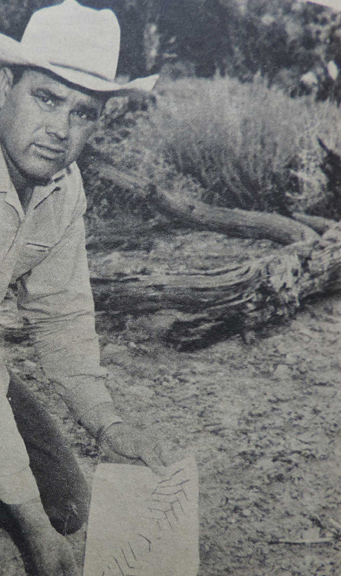
A book published decades ago by Gerald Swasey on the mining history of Polar Mesa offers a bewildering glimpse of Aragon. Swasey and his partners, Had Lile and Pat Babcock recalled a chance encounter with Aragon on Wednesday, July 5. Aragon said he was looking for work and even shared some of his family history with the three men. On Saturday, after Aragon’s death and the Polar Mesa connection had been made, Swasey led investigators to the place where they thought they remembered seeing Aragon’s car parked on Wednesday afternoon. They found two sets of footprints that they followed for some distance, before losing them near the old airstrip. Swasey never refers to the size of the footprints, relative to each other, though other news reports at the time said that one set was “tiny.” It’s important to recall that Dennise was not a child —- she was 15 years old, though only five feet tall. But Aragon was only 5’7” and wore size 7 ½ shoes. Small for a man.
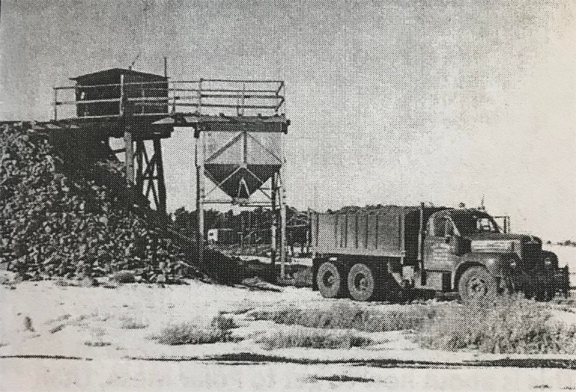
Plaster casts of Aragon’s shoe prints were made at the crime scene. But by the weekend, the Polar Mesa tracks were days old, and nobody bothered to photograph them or take plaster casts before they were apparently blown away by the high desert winds. News reports at the time also said that eventually, the tracks faded away. But to this day, they are as close as anyone has ever come to a significant clue to her ultimate fate. Most people assume today that Dennise Sullivan met her fate on Polar Mesa.
But is it an assumption that makes sense? To answer the question, it’s important to take another look at the history of the man who created this heartbreaking nightmare and 60 year old mystery, Abel Aragon.
* * *
Whenever a crime of this magnitude occurs, it’s logical to assume that the perpetrator is as evil as the crime itself. How could it be any other way? History is filled with the stories of cold-blooded psychopaths and heartless killers— from Bonnie and Clyde to Charles Manson to Ted Bundy. This is who we think of when we contemplate heinous crimes like the Boothroyd/Sullivan shootings..
But this is the mystery that is almost as bewildering as Dennise’s disappearance. It would be so much easier to imagine Abel Aragon as just such a man, who stalked his victims, and was willing to murder them for a pittance of money. A man who could kill a young girl just to keep her from revealing his other crimes.
And yet, except for the last 72 hours of his life, Abel Aragon’s story was exemplary. He received a lot of recognition for his war record, and indeed, his outburst of violence on July 4, 1961 may have had its roots in those brutal days on Guam in 1944. But Aragon’s life after the war was defined by his kindness, his love of family, and his dedication and commitment to honest work. He had five children and he loved them all. His oldest son was almost exactly Dennise’s age.
Aragon was not a career criminal. He never demonstrated any trait resembling sociopathic behavior. Before that night, it would have never crossed his mind to steal from anyone. If he felt he’d been given a raw deal, it was only because he wanted to work and no one would hire him. In the months before the shooting, and as he became more frustrated by his lack of work, his bitterness grew exponentially. He was angry that his service in the war meant so little now. But as recently as a day before the shootings, he was still trying to find a job.
Acknowledging all this, it’s almost impossible to believe that the Polar Mesa footprints belonged to Dennise. In order to accept them as hers, one has to believe that Abel Aragon was far more cold-blooded and cruel than anyone ever suspected.
When Charles Boothroyd spoke to reporters at the hospital, a few days after the incident, he was struck by the inexplicable dichotomy that this man revealed to him and to the Sullivans. It’s important to remember that Aragon met and conversed amiably with the same people who in half an hour would become his victims. Charles later recalled that Aragon “seemed like a nice guy.” There wasn’t a hint that this man was anything but an affable local who loved the scenery and who enjoyed sharing his knowledge of the land he seemed to love.
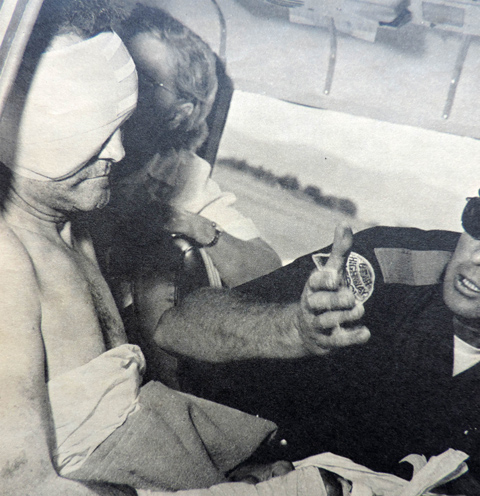
We will never know what process triggered some dark and evil part of Aragon’s brain, but at the moment he fired his first round at Jeannette Sullivan, he had become someone else. Boothroyd later said that the man even looked different. It was his face. Charles would not have recognized him as the same smiling man he’d just spoken to at the Point. He was like a monster. As his rage erupted and he lost all control, the humanity and decency that had defined Aragon all his life was gone.
In 1961, all anyone could deduce was that the man had “snapped.” It was a common and simple diagnosis. But today, where every disorder has a name, so does Aragon’s meltdown, and in this case, it makes total sense. Psychiatrists call it “intermittent explosive disorder.” Its causes are varied, but include genetic predispositions, brain chemistry disorders, and most notably, the consequences of past traumatic events. Aragon had lived more than his fair share of them.
A description of intermittent explosive disorder:
“…manifests itself in what seems like adult temper tantrums. Throwing objects, fighting for no reason, road rage and domestic abuse are examples of intermittent explosive disorder. The outbursts typically last less than 30 minutes. After an outburst, an individual may feel a sense of relief – followed by regret and embarrassment.”
Someone suffering from this mental disorder is likely to show an increasing sense of tension, tantrums, shouting, damaging property, threatening others, and assaulting people. In a classic example, the report noted that, “The degree of aggression displayed during the outbursts is greatly out of proportion to the situation. In addition, the outbursts are not pre-planned; they are impulse and/or anger based.” And it noted that substance abuse, i.e. alcohol can significantly increase the intensity of the behavior.
Years after the shootings, Aragon’s old friend Deputy Semken spoke at length with a law enforcement deputy from Grand County. Semken recalled that Aragon’s work behavior had become erratic in the last months before the murders. He claimed that Aragon was, in part, forced to seek work in Moab because his temper had begun to worry coal mine operators in Price. Semken even worried that Aragon, a non-drinker, had started to turn to a bottle for relief.
More than any other symptom was the fact that the episodes of intermittent explosive disorder rarely lasted more than 30 minutes. And even more to the point, once that rage subsided, the person was able to once again observe and assess his own actions; consequently, that person was likely to be consumed with guilt and shame for his heinous acts.
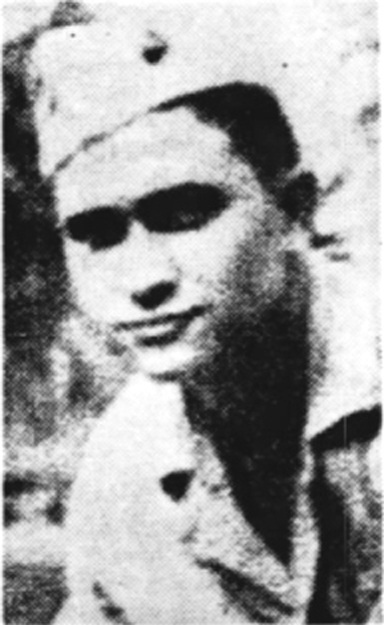
For Abel Aragon, a war hero who had until 9 PM on July 4, 1961 lived an honest and decent life, his transformation into some kind of evil devil must have been almost incapacitating. He had become everything he believed he was not. Aragon’s sudden disconnect with sanity sounds like a textbook example of this form of mental illness. Some have even wondered if Aragon had spent the day at Dead Horse Point contemplating suicide.
How does this apply consequentially to Dennise Sullivan? Again it’s important to recall Charles Boothroyd’s own observations. Remember, he was the only person to see these two sides of Abel Aragon and live to tell the tale. He had seen the man’s face transform itself in those violent few seconds, and when Aragon saw Dennise put the VW in gear and try to escape, it only pushed Aragon further over the brink.
As Boothroyd contemplated the girl’s fate to reporters, the most compassionate outcome he could hope for her, having dealt personally with Aragon’s insanity, was a quick and merciful death. He told reporters, “I only hope he was in the same frame of mind when he murdered Jeannette and shot me. Maybe then he killed Dennise right away. It would be terrible if he left her alone to die in the desert.”
The possibility that Dennise had been tortured, physically or emotionally, by this deranged man was unbearable. Is it even remotely possible that Boothroyd’s desperate hope could have happened?
SEARCHING FOR FACTS & CLUES
This part is personal, or has become personal, as I have learned more about the Boothroyds and Sullivans, and especially Aragon. It is important to consider the facts and the timeline of events as they played out — Aragon had just executed a woman he didn’t know with a rifle shot to her head, then fired two rounds into the face of another innocent man, who had in fact been trying to cooperate. He saw the VW leave the scene, and he must have suddenly remembered the girl. He rammed and crashed his own car into hers until he forced her off the road. It would have been impossible for Dennise to even exit the VW via the driver’s side door. He had her pinned. She must have tried to climb out the passenger door to escape.
But then what? The man was now completely out of control, perhaps more unhinged than he had been just moments earlier. Is it logical to believe that now, at the height of his rage, Aragon took the girl by the arm, pushed her into the front seat of his car, and drove away? Or is it more likely that, as Boothroyd prayed for, he killed again, all in the space of as little as 90 seconds?
Again, trying to create a timeline here could not be more frustrating because the evidence, the eyewitness statements, the sheriff reports, and the FBI files are all gone. If there was one shred of evidence that could place Dennise Sullivan in Aragon’s sedan, other than the assumption that she was, none of this speculation would be worth my time or yours. But we simply don’t know.
Here’s what we do know…
In the moments before Aragon forced the VW off the road, Leonard Brown was just reaching the top of the Seven Mile switchback. The morning after, Brown told the Moab Times-Independent’s Sam Taylor that he saw the Ford coming at him, and that barely 200 yards after Aragon raced by…two hundred yards…Brown came upon the Volkswagen. Aragon must have heard the car coming, knew he had to get away quickly, and probably left the damaged Beetle less than 10 seconds before he and Brown passed each other.
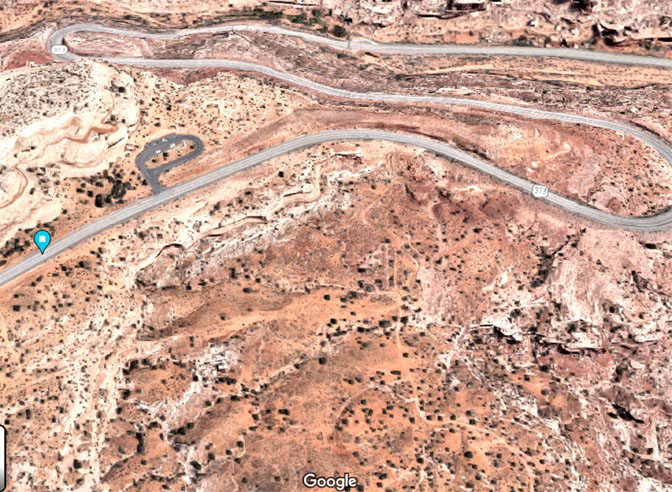
A website called “historic aerials” provides access to old aerial photographs of many parts of the country and, in fact, a high altitude image is available from 1968, before the highway was realigned in the early 1990s. Based on the photograph and Brown’s description, Leonard would have just been approaching the top of the last switchback before the old road made a hairpin turn to the right. At the point where Brown negotiated that hard turn is about 600 feet from the presumed location of the Volkswagen.
Not only would Aragon have heard Brown’s car, which would no doubt have been running at a high RPM as he slowly made the steep grade, Aragon would have seen the headlight beams as well.
At this moment, there are only three possibilities—
1) He murdered Dennise and threw her into the ravine and rocks below…
2) She somehow escaped and blindly ran south into the darkness…
3) Aragon somehow strong-armed Dennise into his car, via the driver’s side door (the passenger side of his sedan was almost certainly pinned against the VW) and held her at bay while he negotiated his car toward the main highway. He could conceivably have rendered her unconscious after he secured her inside his car.
But at this point, knowing that a car was fast approaching, and knowing that the driver of that vehicle, whoever it was, would surely come across Boothroyd and Jeannette, presumably both dead, in plain sight, in barely half a mile, why would Aragon now feel compelled to kidnap Dennise? To hold her hostage? Or even to hide her body?
He was still in an uncontrollable rage at the moment he forced Dennise from the road. But why would he then suddenly change strategies? This man had no strategy at all. Now with an oncoming car, he was beyond fury—he was panicked. He jumps in his car and he leaves the site, as fast as he can, putting as much distance as possible between the VW and Brown’s car. Is Dennise with him? Nobody knows.
* * *
Again, if only the FBI and sheriff’s documentation of the case were still available, none of this would be speculation. We would at least know the answers to these questions. And I still hold out hope that the National Archives will eventually respond to my Freedom of Information request. I even hold out the possibility that someone in the FBI will read these articles and intervene in some way. In fact, I wrote a letter, months ago, requesting that kind of assistance to the Special Agent in Charge of the Salt Lake City FBI office, but I never received a reply.
So we wait. In the meantime, thanks in great part to the information that Linda Boothroyd Lazaraff and Caroyln Boothroyd provided me, there are clues and additional information. Some of it really is tantalizing, but often within the same articles, I’ll come across other “facts” that I know are wrong. The search for evidence itself becomes subjective when one has to weigh the information against what we really know and often, more than anything, what makes common sense. I have come to rely on the concept of Occam’ s razor, as much as any other investigative tool, which states that the simplest explanation is usually the best one.
For example, when I wrote the first and much shorter version of this story last June, I was interested in visiting the site of the shooting. But all I had to go on was a newspaper description that stated that it occurred “about eight miles west from the road junction with US 160. That precise location is now the La Sal Mountain scenic viewpoint. From there, I was able to backtrack a more precise seven-tenths of a mile, based on Sheriff Stocks’ news account, to the place where the VW was stopped.
It was then that I began to wonder if Aragon had not ended Dennise’s life there, as Boothroyd had actually prayed for —the merciful, quick death — and I began to search the area to the south of the road. Just 25 feet from the old road bed, the land does fall away rapidly via steep slickrock domes and escarpments, and into gullies and dry washes. Perhaps she had tried to flee and fell. In my wanderings through the sandy areas below the road, I even found a long steel-handled coal miner’s sledge hammer. It was buried in the sand except for a tiny part of the sledge head. How I even spotted it, I’ll never know. But I thought that perhaps I had found a real clue. For a while I even considered it as a murder weapon.
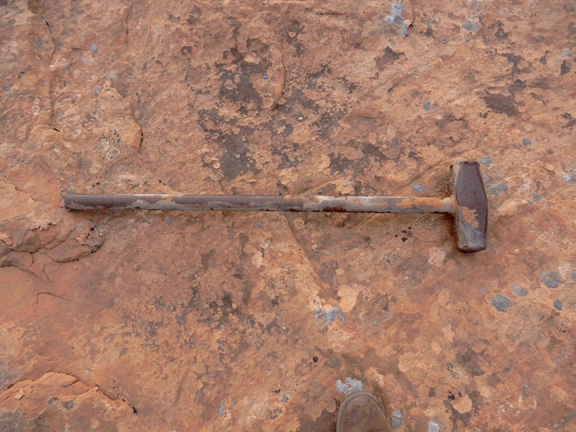
And I found something else—an old Coors beer can with .22 caliber holes in it. At first I dismissed the can as evidence, because it was aluminum and I was sure that Coors was not producing its beer in aluminum until years later. But I did some research and discovered that indeed Coors had started using aluminum to can its product, but only in its 7 ounce cans. But this was a 7 ounce can. I wondered if he had even returned to the scene of the crime.
But I was wrong.
When Linda Lazaroff sent me the family’s binder full of newspaper clippings and other documents related to the murders, it included a Salt Lake Tribune clipping and a photograph taken on the morning of July 5. The picture showed the precise location, down to the square foot. In fact, the shooting had occurred only 5.3 miles from the road junction. My earlier search, based on those early news reports, had been off by almost three miles. I have no idea why that sledge had been left in the gully, but it was unlikely it had anything to do with the killings.
But at least now I had a precise location for the shootings.
Among the other items that the Boothroyd granddaughters sent me was an ancient copy of an old “Detective” magazine. I was skeptical at first because it had the look and feel of an old pulp magazine that specializes in sensational covers and stories. But when I turned to the article, I was shocked by its length and detail. The reporter had clearly been there and had collected an enormous amount of information.
The story was called “Moab Utah’s Riddle of the Badlands” and was written by a reporter named Mark Bird. My efforts to track down Bird have so far been futile. He wrote the long form article in the week after the shooting and it appears his deadline to submit the story was probably no later than July 15, just 11 days after the crimes. That issue went to press by mid-September.
I relied heavily on Bird’s reporting when I expanded my version of those events in the main article. But there were two especially notable facts that appeared in his story that I had been previously seeking without any luck. First the article stated that after Aragon’s fatal car stop at Crescent Junction, his Ford sedan was processed by FBI technicians and “there was no evidence, such as clothing or blood, to suggest that Denise(sic) had been held captive or harmed in the machine.”
Is that possible? It’s a fact that forensic investigations are much more complex and thorough in 2022 than they were 60 years ago. Nowadays DNA samples would have been collected and the vehicle would have been meticulously examined by the square inch. They would be searching for microscopic clues. But knowing that this was the vehicle that everyone believed she had been forced into by Aragon, it must have troubled law enforcement, who could find no positive proof of her presence in it.
Even more startling to me was the description given to Mark Bird by the FBI agents who first spotted Aragon’s car. Previously, the reports of that final sighting had been vague. But Bird’s version of events is so specific, it’s difficult to ignore. I describe that moment in the main story, but to repeat it here, the agents had been ordered by SAC Blaylock to check out a “suspicious vehicle” in a very remote area north and east of Moab, near Cisco. The location mentioned in Bird’s story was Saleratus Wash. I searched for it via Google maps and sure enough, it was just where Bird had reported it. It’s unlikely that the reporter would have even heard of the wash. (NOTE: There is also a Saleratus Creek near the San Rafael Swell)
To reach Cisco, the agents drove north on US 160 to Crescent Junction; then they would have turned east on US 6/50. But to their utter surprise, in the distance, more than two miles ahead, they saw a vehicle coming toward the main highway from the west, from of all places, the Dead Horse Point Road. The vehicle turned in front of them, and proceeded north toward Crescent Junction. At first they paid little attention to the car, and only saw its tail lights occasionally as they followed the same route. But about five miles south of the US 6/50 intersection, they caught up to the vehicle and in their headlights, they noticed that the model and color of the vehicle matched the suspect’s. As they got closer, they were stunned to see that the license plate matched as well.
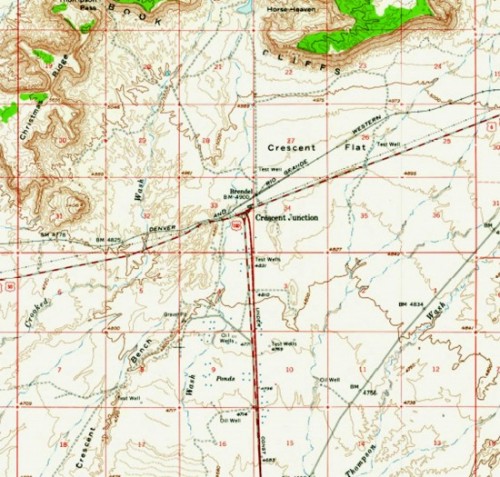
As we know, they followed him to Crescent Junction and it was there that they confronted Aragon and he subsequently shot himself. But the question that was never raised in the Detective article, nor is it mentioned anywhere else— why was Abel Aragon on the same road where he had committed these awful crimes? How long had he been there? How was it possible, with so many people searching for him, that he could have returned to that area?
The fact is, despite all the efforts by law enforcement to catch Aragon, there is proof that he moved more freely than one might have expected. Chances are, at some point, he really didn’t care any more. Maybe he was even looking for that final confrontation.
But one additional piece of information came to me from lifetime Moabite Bobbie Stewart Day. About a week after the original June story was posted on a Moab-based facebook page, Bobbie left a short comment about an event that involved her mother and I immediately got in contact with her.
Bobbie was just nine years old in 1961; her mother Esther Stewart was a telephone operator at what was then Canyonlands Telephone Company, run by Jack Corbin. Its offices were on Center Street and First East, just a block off Main Street. She worked the swing shift and when her mother came home that night, she was still upset over an incident that had happened just a couple hours earlier.
At about 9 PM, a call had been placed from the phone booths that were just outside the phone company offices (as of a couple years ago, they are still there). It was a collect call to Price, Utah. I described this incident in the main story but it’s worth reviewing. Stewart’s fellow operator put the call through, but was so concerned by the tone of the caller’s voice that she listened in. Of course eavesdropping by an operator is a serious violation of company rules and for a few moments, after the call ended, she hesitated to tell anyone. But the man had sounded strange, frenzied, and upset. She realized this could be the man they were searching for and notified the police. They arrived in less than a minute, but Aragon was already gone.
Later, in another news report, the FBI stated that it knew he had been in Moab at 9 PM on Thursday night. But the Bureau refused to explain to the press how they had obtained this information. Bobbie Day’s story helps fill in the blanks.
It wasn’t until Saturday, after Aragon’s suicide, that stories of his time on Polar Mesa came to be known. They learned that he had first arrived there around 2 AM on Wednesday, five hours after the murders. Over the next two days, several people saw him, and his vehicle tracks and footprints were all over the mesa. His rifle and clothing were found. Searcher Ray Tibbetts had come upon a spot on the Polar Mesa road, where Aragon had paced back and forth, along the same short stretch of dirt track, for what appeared to be hours. And of course, there were the “tiny” tracks that had been found but never confirmed.
Nora Ince, the wife of a miner, who had even shared coffee with Aragon recalled something else—he always seemed to leave the camp around 8 PM. She saw him during the day on Wednesday, the day after the shootings and she saw him on Thursday, in the evening, he left the area again. It would have taken him about an hour to reach Moab and the pay phone.
After he hung up, where did he go? It’s unlikely that he would have driven all the way back to Polar Mesa. Under the cover of darkness, is it possible that he somehow made his way north to the Dead Horse Point road and even returned to the scene of the crime?
In Bird’s account he offers this information about the condition of Aragon’s car, after it was seized by the FBI:
“Blaylock was particularly interested in the appearance of the car. Caught in the undercarriage of the machine was grass and twigs, suggesting the car had traveled over rough terrain. It was leaking oil and the sides were scratched…A canvas bag on the car contained murky water that had probably been dipped out of a muddy spring…(FBI) technicians would examine the dirt, twigs, and water and confer with geologists to try and determine where the car had been.”
What did the FBI conclude? We don’t know. The evidence is gone.
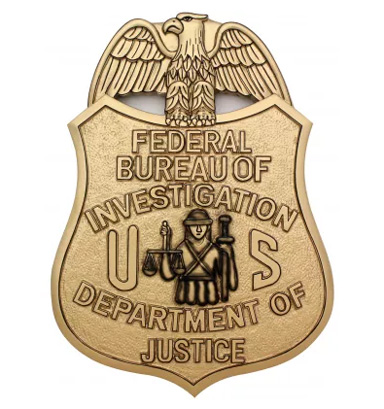
If the account of the two FBI agents is accurate, and if it was reported accurately, what is its significance? Did Abel Aragon actually retrace his tracks to Dead Horse Mesa on Thursday night, after what he probably knew would be his last call to his wife? A call that he made to her on his 35th birthday? Did he return to the scene of his own crimes and for what reason? Did he somehow hide out up there, in some very remote part of the Island in the Sky plateau? What would compel him to do such a thing?
So many questions. So few answers.
The man who came closest to all this and who narrowly escaped becoming a victim himself was Leonard Brown, the rig foreman at the Brinkerhoff oil well. Had he come along the road 15 seconds earlier and seen Aragon and the two collided cars, Aragon would have surely killed Leonard as well. Brown returned to the site the next day with law enforcement officers. He closely examined the Volkswagen. He gave his entire story to Sam Taylor and then days later, to the Salt Lake Tribune. But he offered one more postscript twenty years later, when Steve Lacy’s 1979 account was updated for the winter 1991/92 Peace Officers Association magazine by Jarrod W. Pickett.
In the 1991 account, Brown pondered that awful night:
“I have wondered about it a lot…I just can’t believe that girl was in the car when I passed it on the road. I wondered how it (the investigation) should have been done…We didn’t get a good look before it was trampled over…also no tracks of the girl were found leading to or from her car…I am not in accord with everything that has been said or found on the kidnapping. Lots of things are confused and unanswered. I have many questions yet.”
But no one followed up. Brown’s questions still hang there, unresolved, all these years later.
ANOTHER POSSIBILITY?
In December, after the publication of the long Zephyr story about the events of July 4, 1961, I made another drive to Utah And to the Dead Horse Point road. Thanks to the information provided to me by the Boothroyd granddaughters, I was able to find the precise locations of both the shooting site, down to the square foot, and to the approximate location where Aragon forced Dennise and the VW off the road. The “Detective” magazine narrative noted that she had almost driven into a culvert when the Beetle came to rest. Though the road has been slightly realigned since 1961, the drainages in that area remain constant. A culvert, exactly seven tenths of a mile from the shooting site, still crosses under what is now a paved road.
I tried to imagine what it must have been like…
For a 15 year old girl, Dennise Sullivan’s instinct for survival was extraordinarily strong. Many young daughters and sons might well have frozen with fear at the sight of such a horrific act. Her mother and her future step-father had just been shot at close range. She must have assumed they were both dead. But Dennise didn’t freeze. Instead, she climbed over the backseat, put the car in gear, and desperately tried to escape. According to Boothroyd, she had never driven a car in her life.
Aragon jumped in his Ford and pursued her. He quickly caught up to her and began to ram the VW from behind. Numerous dents and scratches were evident later. But she kept going. Now in a fury, Aragon pulled alongside Dennise and forced the passenger side of his sedan into the driver’s side of the VW. Still she kept going. Then she saw the culvert, realized she had no choice but to stop or she would drive into it. She hit the brakes and screeched to a halt. Aragon’s reflexes would have been slightly slower and as she stopped, his rear bumper caught the edge of the left rear wheel cowling and creased the side of the Volkswagen. Most likely the two cars were pinned together. Her only way out was via the passenger door.
This is the location where the two cars came to a stop.
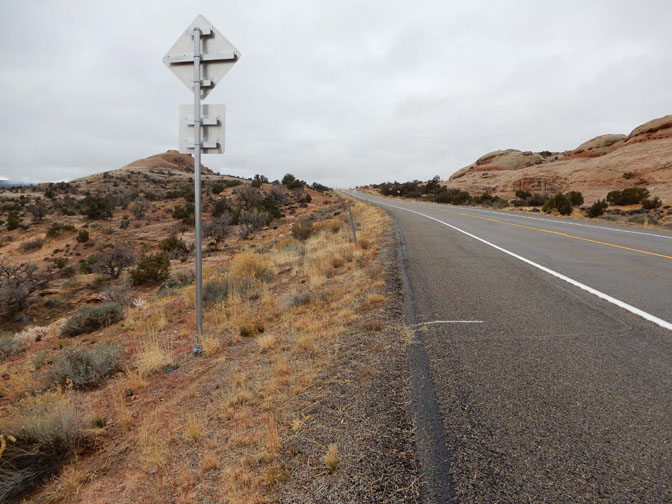
Dennise would have had to climb past the gear shift and over the passenger seat, and push the door open to exit the car. She was 15 years old, agile and running on pure adrenalin. A VW in those days was very narrow to begin with, and because it was a rear-engine vehicle, there was no hump in the middle of the interior to negotiate. She could have been out of the car in a matter of five seconds.
Aragon would most likely have been able to stop within a second or two of the VW. Now he had to climb out of the driver’s side, run around his sedan, to the Beetle, and stop Dennise before she could get far. Both cars had standard transmissions and in the chaos of the moment, both most likely failed to engage the clutch and put it in neutral; consequently both the Ford and VW would have lurched and stalled. Now it was quiet. As Aragon climbed out of his car, he would have heard the grind of Leonard Brown’s car, coming up the long grade from Seven Mile Canyon. He may have even seen the beam of light as Brown’s headlights illuminated the cliffs. He knew he had to move fast.
But there’s also the account of Wilma Aldridge, who, with her husband Cliff, saw Aragon at Dead Horse Point just an hour earlier. In 1979, she told author Steve Lacy that when she saw Aragon, she noticed how badly the heels were worn on his shoes, and that he seemed to be in pain– he was limping as he moved.
Like Dennise, Abel Aragon was running on adrenaline, but with whatever injuries or disabilities he had endured, could he have moved fast enough? Now Dennise was out of the car and her only hope was to get as far away from this man as she could. She would run in the only direction that could achieve that purpose—she looked to the south of the road and saw open ground. It was almost dark and difficult to make out any detail, but she knew that her only chance was to run. She raced blindly in that direction, and she heard Aragon struggling to catch her.
As she looked south from the road, this is the scene that Dennise would have barely been able to discern in the near darkness that was surrounding her…
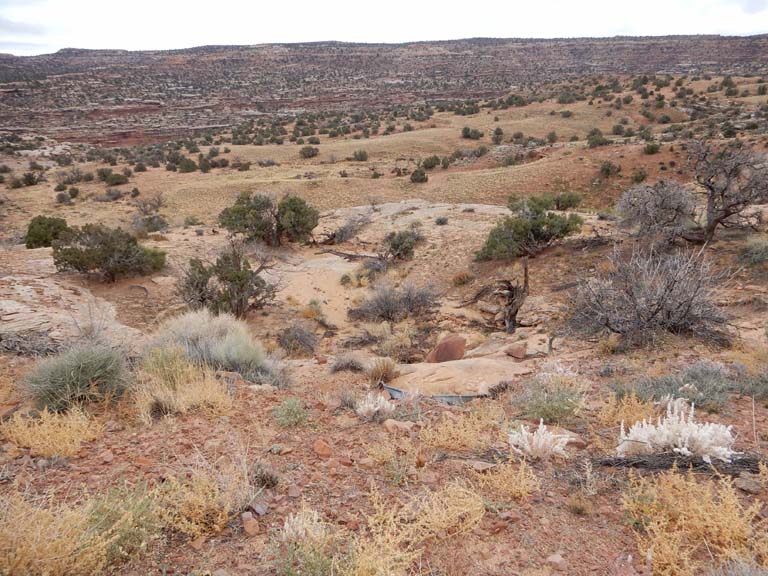
But the view was deceiving. It’s difficult to notice, even in the light of day, but at night it would have been impossible for her to realize that the landscape was far more rugged than she could have imagined. In fact, the open meadows that she could see were a thousand feet away. And between that open ground and the road, another obstacle awaited her. As Dennise fled the VW and Aargon, she would have first found herself stumbling down a steep sandstone incline, but in her haste to escape, she would have probably felt safer running blindly ahead than looking back. Within 50 feet she would have come to the edge of a 50 foot sandstone cliff. Would she have even seen it coming?
Note the road sign in this image at upper left. Just to the left of this sign is the culvert. Had she run south, she would have discovered this…
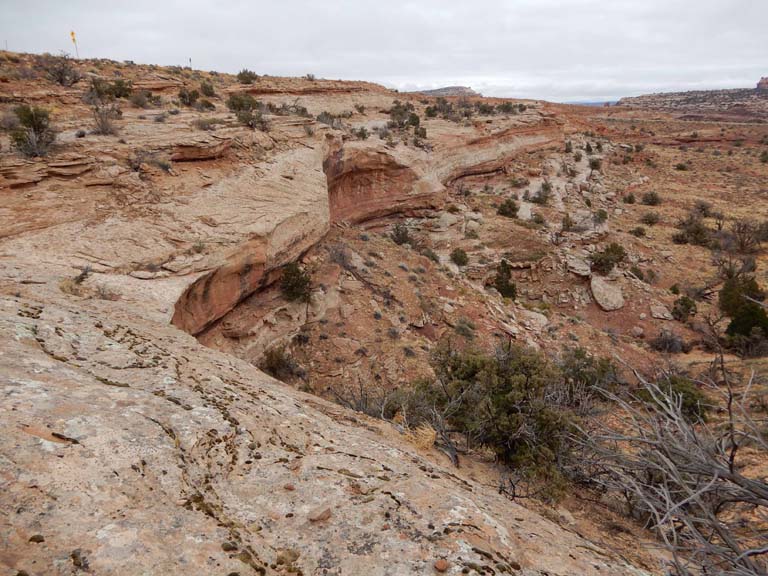
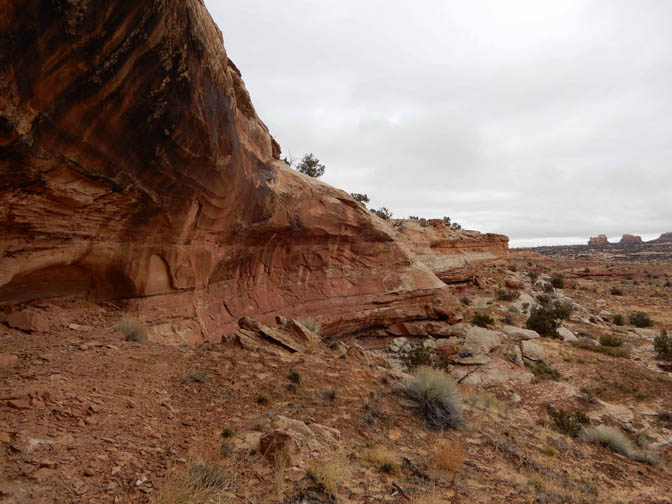
Would Dennise have seen the canyon’s edge and stopped short? Would she have turned and given herself up to Aragon? And Aragon — with his limp and realizing that another car was within seconds of reaching him — would he have even pursued her? Was he able to grab the girl before she could get too far from the car, pull her back to his sedan and force her into the front seat? Could he have done all that and somehow restrained her, just moments before Leonard Brown made that last hairpin turn and saw Aragon’s Ford racing east? Or at that moment, did Aragon’s own instinct for self-preservation, and the need to get far away from this murederous scene, compel him to jump back in his Ford and head east? Is it possible that Dennise’s death came quickly and mercifully as Charles Boothroyd had later hoped and prayed for?
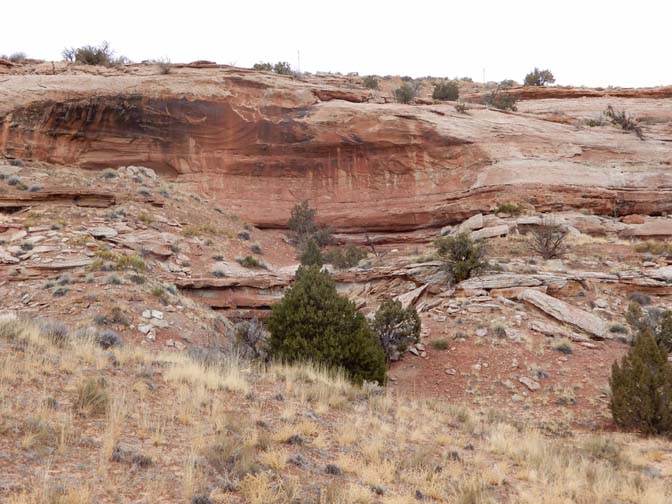
One more question comes to mind. As noted, new information about those haunting 72 hours after the shootings strongly suggest that Aragon made his way from Polar Mesa to Moab at dark on Thursday night. He called his wife from a payphone just yards from the courthouse, then vanished into the night before law enforcement could reach his location. Abel Aragon must have realized there was no way out of this nightmare. He must surely have been consumed with guilt. It’s worth noting that when he was finally stopped by the FBI at Crescent Junction, 24 hours later, Aragon made no attempt to shoot the agents. He was done killing and he knew his only option was to turn the gun on himself.
But when the agents first spotted Aragon’s car, according to the Detective magazine article, he was coming from the Dead Horse Point road. Why? Why had he returned to the scene of his own crimes? Is it even remotely possible that on Thursday evening, 48 hours after the shootings, that Dennise Sullivan’s fate was as much a mystery to Aragon as it was to everyone else? Did he return to the area to find her?
Newspaper reports from the day after the shootings note that law enforcement officers searched the surrounding area for any sign of Dennise and found nothing. But as Leonard Brown later observed, the ground around the VW had already “been trampled.” Key evidence may well have already been destroyed. Did the deputies and officers work their way west to negotiate the difficult ground and drop down a hundred feet to the sandy area below? Then did they pick their way over boulders and ledges to reach the very base of the cliffs that ran more than a hundred yards adjacent to the old road? To be certain they would have had to check every cluster of boulders, every hidden ledge, every ancient juniper tree to be sure that Dennise Sullivan had not fallen into this inaccessible ravine. But based on the immediate response by law enforcement, would they have taken the time and effort to run down a possibility they already thought lacked credibility?
Because, more significantly, before sunrise of the following morning, the sheriff was already working the case as a kidnapping and had called in the FBI, aerial search planes, and almost one hundred volunteers to search a vast swath of rugged desert that even Sheriff Stocks considered an overwhelming, if not insurmountable task. In fact, from the moment Leonard Brown told the deputy that “He must have taken her,” all of law enforcement’s efforts were coordinated to pursue the kidnapper, wherever he may have gone. All efforts were always directed at locations away from the original site, not to it.
* * *
So what was Dennise Sullivan’s final fate? When was all hope lost and that moment came when she left us and joined her mother in a place that was surely a relief from the hell she was enduring? As Charles Boothroyd once wished, did Aragon end her suffering immediately after the shootings? Did he need to be in that same psychotic rage to commit the kind of heinous crime that had already left the stain of blood and shame on this man who had destroyed every decent aspect of a life for which he had once been praised and honored and respected?
Or did he take her alive, force her into his car, drive her across miles and miles of rugged, deadly desert, keeping her barely alive and in state of absolute terror for hours or even days. Did he do all this before finally snuffing out her life in what now had to be the ruthless, premeditated, cold-blooded act of a man who knew exactly what he was doing. Did he then dispatch her body in a way that even now, 60 years later, has kept her final fate a heartbreaking secret?
As I said at the beginning, there is no good ending to this story. But like Charles Boothroyd hoped and prayed, I’d like to believe that her suffering was short and merciful.
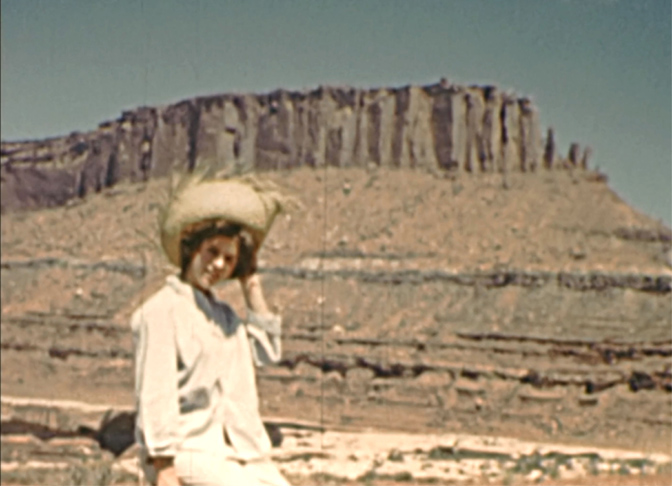
Jim Stiles is the founding publisher of The Zephyr.

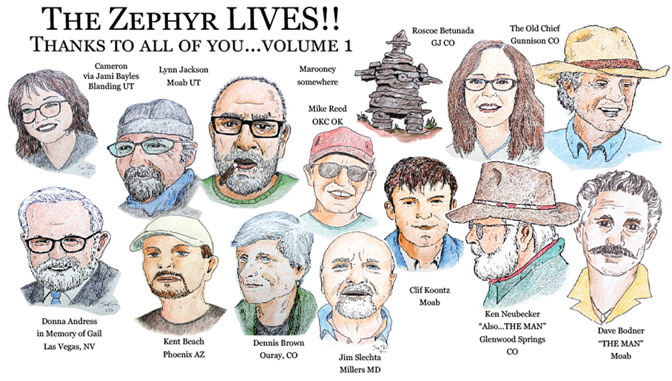
I’m grateful to say that rumors of the Zephyr’s Death were greatly exaggerated, and I surely helped contribute to it. For sure, after my former wife left me AND her Zephyr publisher responsibilities and commitments so suddenly, the Z did indeed seem doomed.
I had no idea how to do a digital version of The Z. That was her great talent
along with her extraordinary organizational skills…. I thought it was over.
But so many of you were incredibly supportive and encouraging; finally I crawled out of my black hole and have tried my best to keep The Z alive . The Backbone support from you has been phenomenal. I expected an avalanche of cancellations from The Z’s “sustaining supporters.” Incredibly I had only two–and one of them was Tonya’s mother. Totally understandable.
And for sure, others were also skeptical that The Z would survive.
Even my former wife wrote this in a publicly accessible internet site:
“For a while I was publisher of a bi-monthly online periodical—The Canyon Country Zephyr…Unfortunately, or maybe fortunately…a cosmic joke of timing occurred, and things went sideways for The Canyon Country Zephyr. As I’m writing this, the fate of that periodical is unclear. It may be dead. It may be on extended life support. All I can say with certainty
is that the Z will not be what it used to be.”
But despite the predictions, The Zephyr is not ‘dead,’ and it’s not on ‘life support,’ and while it may “not be what it used to be,” I’m hoping that with your help and encouragement…
and your friendship,” I can, in fact, make it better. Thanks again…Jim Stiles
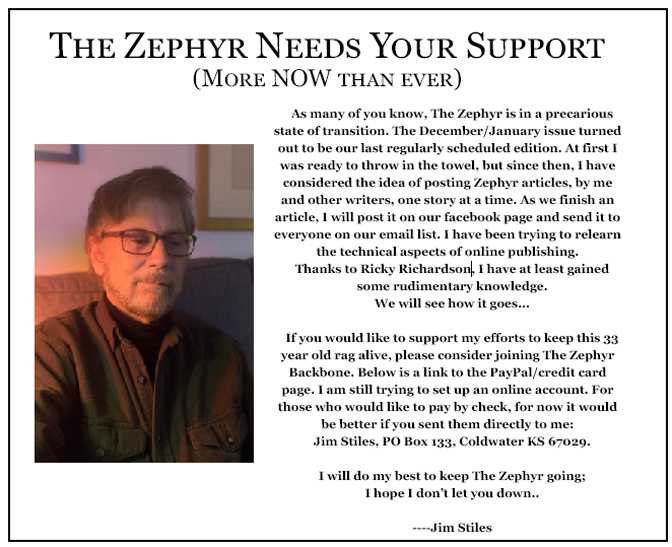

…


The Zephyr is most certainly NOT dead nor merely on life support. I suspect, Jim, that now that you are past the shock and getting your feet back under yourself and finding a new balance, that you will (hopefully) continue on with what has been your life for the last 33+ years. The Zephyr is a tremendously valuable publication and this article is just one of many examples of why. Your prescience concerning the horrors of industrial tourism in the modern West provides a valuable counterpoint to the horrid commodification of Wilderness in SE Utah and the Colorado Plateau – certainly in the sense of Abbey’s “Voice crying in the wilderness” against the group-think of those who believe tourism and gentrification is the salvation of the West from the forces of extractive industries.
Keep it going. I’ve been a fan of the Zephyr since I picked up my first copy at Back of Beyond in March, 1989.
Wow, what a compelling, sad story this is! I’m with you; I suspect Dennise ran for dear life south from the highway and, not seeing the cliff, ran right off of it. Also, back in 1961, I don’t think the USA was on Daylight Savings Time yet, so it may have actually been completely dark by 9:00 p.m. But if she indeed ran off the cliff and was killed upon impact, wouldn’t at least some human bones still be around there? I hope this mystery is finally solved if and when you receive your records request from the National Archives. Keep up the wonderful journalism in the Canyon Country Zephyr!
Hope against all odds, I pray and thank Jim Styles for not giving up on this… This is my family, not just an article. Many of our lives were forever changed. The ripple effect is still there…
Spellbinding account of a tragic murder mystery and kidnapping. Interesting proposed possibilities, and I agree that she must have had a fall off the cliff in the dark. Hope she didn’t suffer!! She must have been terrified. Looking forward to the future information you may uncover. You have outstanding detective skills, in addition to your fine storytelling ability. Thanks for an incredible analysis if all the clues. Keep writing!!
By the grace of God, May Jim Styles, against all odds, never give up on this. In a second our family was changed forever. The ripple effect continues…
I wonder why the authorities didn’t do a better job, at least Dennise could have been put to rest.
Like Mr. Musselman, I also picked up my first copy of the Zepyyr at the Back of Beyond book store.—a little later than 1989. I’d also like to echo his sentiments on your finding some balance again. And as much as we can, we are with you. Your stories and opinions are very much needed and necessary. Take care.
Riveting reading. So glad the Zephyr is alive and well.
Another great article and thanks for your insight. So many questions with so many scenarios and no answers. This will forec=er haunt me.
A wonderful, compelling, (unfortunately true) story. The fate of young Dennise has haunted me now for 60 years. So glad you are still investigating and reporting on this. I think that if the forensic pathology that is available today, were available back then, we would likely know the fate of Dennise Sullivan. My heart goes out to the family. I keep hoping that someone will someday discover her remains.
I did not see this written but could Aragon have been returning to the murder scene to retrieve the money that had been left in the haste of chasing the escaping teenager?
Your research and storytelling skills are outstanding and from my perspective, the Zephyr has captured my attention more than it did in the past. That translates to better than ever. I hope to be adding my name to your backbone supporters soon.
What an engaging story , well researched and read like a mystery novel. I ,too am haunted by this story since it first ran a few years ago. I pray and hope some degree of peace come to the surviving family members. Thank you for the update and wish you and this very important news publication all the best. I will keep checking in. Peace
Dang! This would make a helluva screenplay.